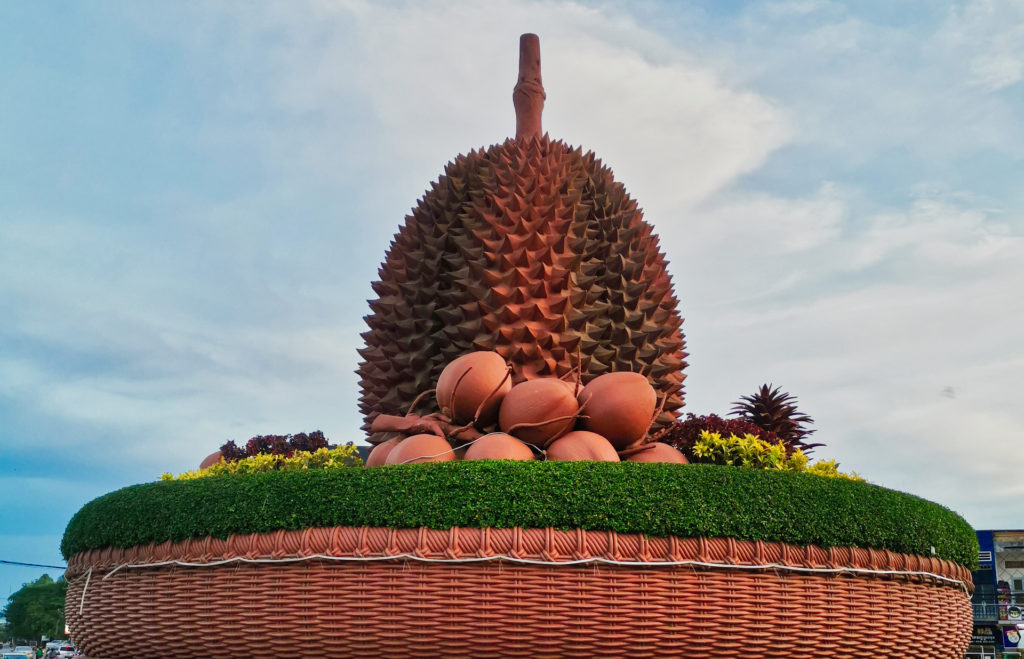Kampot – a small town known for its pepper plantations
A very special destination is the city of Kampot, located in the south of Cambodia. There, visitors can still discover the beautiful villas and magnificent buildings from the time of the French occupation around the turn of the century. Even though the houses are now somewhat dilapidated, the flair of the Fin de Siecle can be guessed and gives insight into times long past. In particular, the banks of the Kampot River is the area where the French occupiers liked to settle and where most of the most beautiful houses are still located today.

The Kampot River with Bokor Mountain in the background
One of the most famous landmarks of the city is the Durian Monument. This is located in the middle of a traffic circle and commemorates the former durian plantations that were destroyed by the Khmer Rouge regime. Today, the fruit is still native to the region around Kampot and is exported from there all over the world (although Western palates may still have to get used to the taste of the so-called “vomit fruit”).

Giant durian fruit – the landmark of Kampot city
Although many visitors see Kampot only as a kind of stopover (for example, to the national park, which is only a short distance away, or on the way to the beautiful coastal town of Kep), it is well worth devoting two or three days entirely to this special city. In addition, Kampot is home to a large number of German-speaking expats, hotels and restaurants.
Kampot has about 50,000 inhabitants and is located on the Teuk Chhou River. Two bridges (the Old Bridge and the New Bridge) cross the river and are good orientation points for a sightseeing tour of the city itself (whereby the riverside promenade and the French quarter are particularly suitable for strolling, as there are also numerous coffee houses and small restaurants). More unusual is a visit to the salt fields, which are located just outside the town: The form of salt extraction here is a very special one, as it is the case that fields are actually cultivated here for this purpose. In any case, this is something that visitors probably do not get to see so often.
In addition, tourists should definitely plan a trip to the pepper fields, since the Kampot pepper (along with the durian fruit) is considered one of the main products of the region: the name is even protected and may only be used for products from this area.
All in all, it can be said that the small colonial town of Kampot is much more than just a place to pass through: Even if many tour providers in the region have not scheduled major dwell times on site, especially individual travelers should get to know here a chance far from the tourist masses.